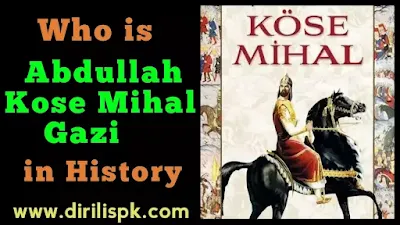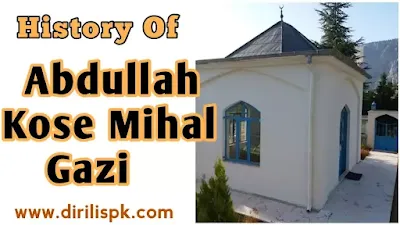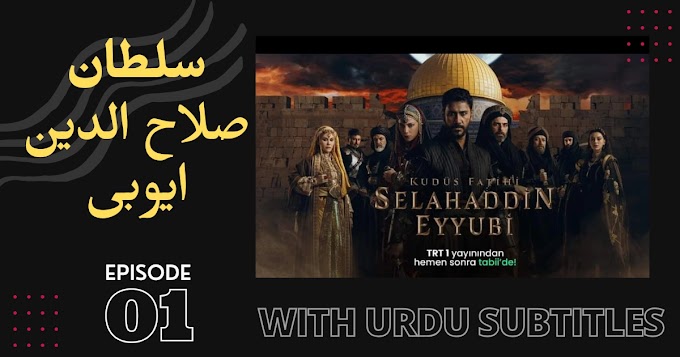History Of Abdullah Kose Mihal Gazi :
Real History of Abdullah Kose Mihal Gazi is our today's article topic. Who is Kose Mihal? What years did he live? Kose Mihal is the ancestor of Mihaloğulları, one of the families of the Ottoman raider lords, and one of Osman Bey's comrades. Here is the information about Kose Mihal in historical sources.
 |
| Real History of Abdullah Kose Mihal Gazi |
Who is Kose Mihal? What years did he live? Where is his tomb? Mihaloğulları is a family of raiders who were useful in the founding period of the Ottoman Empire and the conquest of Rumelia. Kose Mihal is one of Osman Bey's comrades. There is important information about Kose Mihal in the Religious Foundation's Encyclopedia of Islam.
Extra History of Mughal Empire || Fall Of Mughal Empire
Who is Abdullah Kose Mihal ?
According to the Ottoman historical tradition, Kose Mihal, who is the ancestor of the family, was the Harmankaya Tekfur of Byzantium in the time of Osman Bey, but in time he became one of his brain comrades, and accepted Islam, probably in 713 (1313) as a subject to the Ottomans. It is stated that he took the name Abdullah Mihal after he became a Muslim, participated in all of Osman Bey's wars and guided the Ottoman army in the raids in the Sakarya basin. It is also stated that he took part in the conquest of Bursa and conducted the negotiations between the Byzantine Tekfur and Orhan Bey before the conquest.
The tomb attributed to him is in the village of Harman in the Gazimihal sub-district of Söğüt in Bilecik. The tomb of Kose Mihal, who is understood to have had a zaviye and a bath built in Gölpazarı, was built in 1885 by the II. It was rebuilt by Abdulhamid.
Click here to read Orhan Gazi History.
Kose Mihal's Sons :
The descendants of Kose Mihal later moved to the European continent with the conquest of Rumelia and served as raider lords. It is accepted that Kose Mihal had three sons, Aziz Pasha, Balta Bey and Gazi Ali Bey, and they were operating along the border in Rumeli. However, the information in the sources about the activities of both them and those shown as their sons is quite mixed.
It is stated that Aziz Pasha, son of Kose Mihal, conquered Vize Castle and died in 806 (1403), and his son was Gazi Mihal Bey. Gazi Mihal Bey, who is understood to be the first well-known personality of the family, was the son of Mehmed I and II. During the reign of Murad III, he was successful in military activities in Rumelia, especially in the conquest of Bulgaria. Mihal Bey died in 839 (1435) in Edirne and his tomb is in the Gazi Mihal Bey Mosque graveyard. Mihal Bey has been accepted by some historians as the ancestor of Mihaloğulları due to his heroism.
Amazing Facts About The Greatest Empires
What Did The Mihaloguls Do?
Mihaloğulları performed important services in Anatolia as well as in Rumelia. The descendants of Gazi Ali Bey, son of Kose Mihal, settled in Bursa and Amasya and held administrative positions. II. It is understood from the charter records that Yörgüç Pasha, who was the governor of Amasya at the beginning of the Murad era, was a descendant of Gazi Ali Bey from Mihaloğulları. Mihaloğulları from this branch has survived to the present day.
 |
| Real History of Abdullah Kose Mihal Gazi |
Members of the Mihaloğulları family, whose influence and influence decreased as it lost its importance since the 19th century, also gave importance to science and culture. In addition, members of the family had architectural works such as many mosques, lodges, madrasahs, fountains and bridges built, and foundations, especially in Harmankaya, Gölpazarı, Bursa, Amasya, Vize, Edirne, İhtiman, Pleven and Tırnova. Gazi Mihal Bey had a mosque built in Edirne in 825 (1422), and later two bridges (see GAZİ MİHAL BEY MOSQUE; GAZİ MİHAL BRIDGE) and charity works in Eskişehir Seyitgazi. Mihaloğlu Fîruz Bey in Tırnova had a mosque built here, and Gazi Ali Bey had a mosque, tomb, madrasah, school, lodge, fountain and palace in Pleven; He had a mosque built in Niğbolu and a bath in Vidin.
Extra History of 16 Turkish States
Real History Of Abdullah Kose Mihal Gazi :
Kose Mihal was taken prisoner in the war he fought against Osman Bey together with the Bey of Eskişehir. Osman Bey, looking at Kose Mihal's valor and heroism, forgave him. In the following years, a trap would be set against Osman Bey by the Tekfurs. This trap was an assassination attempt on Osman Bey during a wedding. Kose Mihal, who informed Osman Bey of this assassination attempt; By warning Osman Bey in time, he took precautions and ensured his salvation, thus conducive to the capture of Yarhisar and Bilecik. After this incident, Osman Bey and Kose Mihal became good friends and comrades.
Click here to read All Ottoman Sultans Biography.
Mihal Bey converted to Islam in 1313 and took the name "Abdullah" due to his friendship with the Turks and his closeness to Osman Bey. After that, Mihal Bey, who always acted with Osman Gazi and guided during the conquests because he knew the region, showed great heroism by conquering Göynük and Mudurnu and some other castles in the Sakarya Valley. Kose Mihal Bey, who made great contributions to the progress and development of the Ottoman Empire in the first years, also participated in the conquest of Bursa with Orhan Gazi. After Mihal Gazi died in Yenişehir in 1327, he was buried in his tomb in Harmanköy, Inhisar district of Bilecik.
 |
| Real History of Abdullah Kose Mihal Gazi |
Tomb Of Abdullah Kose Muhal :
In Harmanköy, the homeland of Abdullah Mihal Gazi, commemoration ceremonies for Abdullah Mihal Gazi are held every year on the first Sunday of September with the participation of statesmen, academics, historians and many guests. Kose Mihal Gazi's tomb in Harmanköy is visited, prayers are said and traditional meals are served to the guests. In 2021, the 694th commemoration ceremonies will be held every year.

















0 Comments